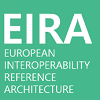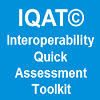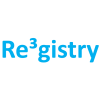Recommendation 16 | Principle 9: Multilingualism
Use information systems and technical architectures that cater for multilingualism when Establishing a European public service. Decide on the level of multilingualism support based on the needs of the expected users.
Solutions
| List of all available solutions that implement this recommendation |
|---|

|
CIRCABC allows to manage multi-language documents, thus enabling multilingualism. |

|
By supporting the search function in any of the EU languages eCertis promotes multilingualism to meet the needs of the expected users. |

|
The EIRA EIF view contains the principle of multilingualism and it is also included in the technical view of EIRA. |

|
eTranslation can be integrated into your information systems to make digital public services and content multilingual. |

Location Framework Blueprint
|
In the EULF Blueprint, as part of the approach to implement recommendation 13, it is recommended to establish a data quality standard which incorporates multilingualism to ensure consistency and appropriateness in the way key enterprise data is applied and reported across the National and European Data Infrastructures. |

|
EUSurvey allows to produce multi-language surveys, thus enabling multilingualism. |

|
Question D4 of the Service Delivery section of the IMAPS questionnaire assesses the multilingualism of the available public services to citizens and businesses. |

|
The IQAT assesses the extent to which multilingualism is considered and implemented when designing a solution. |

|
By default, LEOS is provided in English. However, it can be customised in others languages. |

|
By aiming to create interoperable multilingual classifications and terminologies that will be easily reusable by small and medium-sized enterprises (SMEs) and public administrations, this action contributes to achieving multilingualism across Europe. |

|
PMKI datasets will support localisation of digital services (for example the reuse of PMKI product taxonomies for the implementation of an eCommerce solution). |

|
The Re3gistry provides multilingual labels and hence contributes to the facilitation of the internationalisation of user interfaces. |

|
By design, Ref2Link encompasses the multilinguism aspect. It can build rules that are language sensitive and inject a language in the generated links. Out-of-the-box detection of EU legal acts in its 24 national languages is provided. |

|
The Sharing and Reuse Framework recommends taking into account the multilingual IT environment when developing IT solutions. |
| VocBench 3 caters to multilingualism by managing multilingual controlled vocabularies such as ontologies, thesauri, authority lists, glossaries and lexicons. | |
|
SIMAPS solution v1.0.0 |
Question D5 of the Service Delivery section of the SIMAPS questionnaire assesses to what extent the data delivered by a public service are being made available in more than one language. |
|
TIMAPS solution v1.0.0 |
Question D6 of the Service Delivery section of the TIMAPS questionnaire assesses the extent to which multilingualism is supported by a public service. Multilingualism in the context of computing indicates that a digital public service dynamically supports two or more languages. |
|
OpenPM² |
OpenPM² is currently available in 11 languages and it is supporting crowd-sourced initiatives to have it translated in all European languages. |







